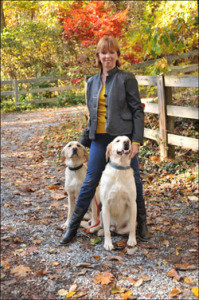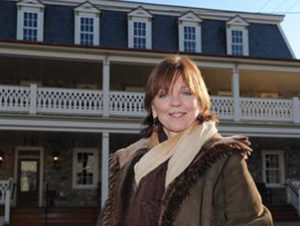#TBT – Sitting down with…Nora Roberts
Happy #TBT! When last I sat down with mega-bestseller, Nora Roberts, it was October 2011. I was still single, she a happily married new grandma on her 100th book, me on my fifteenth. I’ve added about ten more novels to my stack since then, she… well, I’ve lost count. (For a printable book list by year and pub date, go here). What hasn’t changed is my enduring admiration for Nora, not only as a superbly talented and dizzyingly prolific author but as a first-rate human being. (Per the latter, you can read her 12/29/19 response to the ongoing RWA debacle here). Nine years later, I still want to be Nora Roberts when I grow up. Enjoy the following unedited original interview.
She is a living legend, one of the most read and wealthiest writers on the planet, romance publishing’s answer to Oprah.

She is Nora Roberts and for anyone who hasn’t spent the last twenty years buried beneath a rock, “Nora,” like Oprah or Cher, suffices as her sobriquet and her calling card.
I first met Nora in 1997 at a writers’ retreat in Columbia, MD. I say met because I mostly stared at her goggle-eyed from behind the hotel’s potted plants and the paperback book I pretended to be reading. Then I was a starry-eyed yet-to-be published newbie with big dreams and a lot to learn—about craft, about the romance industry, and about life overall. She was then, as now, a total rock star as well as gracious to the bone.
More than a decade later, I recently sat down with The Nora to dish on her books and how she manages to keep her life so wonderfully real amidst all the mega success.
HCT: Recently The New Yorker called you “America’s favorite novelist.” Between your Nora Roberts and JD Robb brands, you’ve written more books than many Americans have read (or will read) in their lifetimes. Today every Nora Roberts and JD Robb book is an automatic NYT bestseller. Most recently, you were the third author to sell more than one million Kindle books. And then there are your eight books adapted into TV movies for Lifetime. When Irish Thoroughbred, your first book, came out in 1981 did you ever dream that one day you’d be this…b-i-g?
NR: Who knew from big? When I started out I just wanted to write books. I still do. It’s the best job in the world for so many reasons. I wanted the thrill of seeing my books on the shelves in bookstores. I still do. The idea of someone reading my work, enjoying it was just amazing—and it still is.
The bar rises, and that’s a good thing. It pushes us to write smarter, write better, to dig deeper creatively. The best-seller lists, the awards, the sales or movies, they’re all really delicious icing. But the work—the stories, the books—that’s the cake. Too much icing without a really good, solid cake? It’s going to make you fat, lazy and maybe a little bit sick. It’s always about the cake first.
HCT: Irish Thoroughbred, a category romance for Silhouette, came out in 1981. Your first NYT bestseller was in 1991. Can you talk about what went on during that decade? Did you have a Master Plan for building your career to mega bestseller-dom?
NR: I never had a plan, except to write. I love what I do, and have from the beginning. Loving what you do makes it a lot easier to work, every day, to face the tough spots and heel in for the long haul. Nothing against plans; they work for some people. But for me, if I’d been planning, worrying about numbers, trying to micro-manage my career I wouldn’t have focused on the writing. If you don’t write, you’re not read. If you’re not read, you don’t sell. So that’s my Master Plan, I guess. Write the books, let the agent agent, the editor edit, the publisher publish.
HCT: Chasing Fire, which released in April 2011, explores the world of elite firefighters. Can you tell us a bit about how you came up with the concept for the book, the kinds of research you did?
NR: You know I can’t remember where I got the idea. I hardly ever remember where I got the idea. This is a single title. I wanted to show not only want went on inside the world of smoke jumping, but what goes on inside the heads of those who risk their lives to fight fire in the wilderness every season.
Research was intense. I often think after I start researching: Why, Dear God, why did I think this was a good idea? I read and read about smokejumpers—the difference between the round canopy, the square—and which organization uses which, and why. Their training—jeez, you have to be crazy! Their routines, the science of it, the physicality, on and on.
I read about wilderness fires. About planes, hoses, retardant, spotters, gear, equipment, food, tools. I know I came away from this book with an incredible admiration and gratitude for the men and women who jump fire—and the certainty that they’re all—God bless them—out of their minds.

HCT: The Inn Boonsboro, the Western Maryland historic property you and your husband purchased and restored, suffered a devastating fire during the first rehab/restoration process. Happily it is now open as a boutique inn offering eight guest rooms themed for famous fictional romantic couples, onsite upscale dining and other wonderful amenities. Did that experience at all influence your interest in the firefighting world?
NR: I guess I’ve always had an interest and admiration for firefighters. I wrote about arson investigation and fire in Blue Smoke. Certainly my admiration grew on a personal level when we experienced the devastating fire in Boonsboro. The responders were simply amazing, fighting for hours to stop the fire from spreading. Because of their work and skill no one was injured, and while our property was taken down to the old stone walls, they saved those old stone walls. And we were able to rebuild. Inn Boonsboro is not only beautiful, it not only offers guests a unique and lovely experience, but its character and its history remain vibrant. And we owe the firefighters a great debt for that.
HCT: In 1997 you won the Lifetime Achievement Award from The Romance Writers of America. I’d just joined RWA a few months before as unpublished newbie. I was way too shy to approach you one-on-one, but not too shy to ask you in a Spotlight Session if it was okay to use contractions in the dialogue for my WIP. Contractions! You could have made fun of me big time. Instead you graciously answered my question without so much as an eye roll. Afterward, I covertly watched you and your girlfriend posse—Pat Gaffney, Mary Kay McComas, Ruth Ryan Langan, Donna Kauffman, and maybe Mary Blaney—in the hotel lobby bar from behind the book I pretended to read—no iPhones then—which sounds incredibly creepy, but I was that s-h-y. Have you ever had a Fan Girl Moment when you were first starting out?
NR: Gosh, we were all so new it seemed like everyone was a newbie. I met Ruth Langan at the first RWA conference, and we were both so shy and intimidated. We didn’t know anybody. My first book had just come out, and hers was coming out in another month or two. Both of us sold to Silhouette Romance—and were too terrified to even speak to any of the editors. They were like GODS to us.
I remember Karen Solem, who was editor-in-chief for Silhouette at the time, introducing herself to us at a party, chatting away. I honestly heard nothing but Charlie Brown’s mother’s voice because I couldn’t get over the fact Karen Solem spoke to me.
HCT: Amidst all the accolades and stunning successes, you’re a very down-to-earth person. You still live in your original log cabin-style home atop the mountain. (Okay, you’re married to a brilliant carpenter/builder, but still…). You garden. I’ve heard you say more than once that you cook dinner every night. You quietly give to charity in a major way. And most recently you’ve given back to your local community by purchasing what was for many years a vacant, even derelict, historical property and restored it to grandeur, revitalizing the historic Boonsboro downtown in the process. In an era when so many celebrities—Charlie Sheen, Lindsey Lohan, the list goes on and on—seem to be losing it, how do you manage to keep your life and yourself so together and so…real?
NR: I really like my life. I love my family, my home, my dogs, my place. I like my routine. I’m not looking for party time—mostly. My husband can’t even drag me out of the house for dinner. You have to put on real clothes and makeup to go out to dinner, right? I like having my kids and grandkids over. Nothing keeps you grounded like a houseful of noisy kids or finding stray dog poop on the carpet.
Life is real, and real is pretty good. I have two terrific sons, their wonderful ladies, fun, interesting grandkids, amusing, demanding dogs and a great husband who enjoys them all with me. It’s a really good deal.
HCT: Readers want to know about the woman wielding the pen or rather tapping away at the keyboard. Your web site kindly takes us through a typical Day in the Life of NR? Where do you find your self-discipline? For those of us who struggle with procrastination, guilt over not doing other non-writing things etc., can you offer any suggestions?
NR: I really do love the work, so that’s key. And I have my Catholic education in the mix. The nuns really do instill a solid sense of discipline and guilt, both essential writers’ tools. I’m cranky if I’m not doing my job. Why would I want to feel cranky?
There are a lot of things that mix in and mess up the routine for me and that makes me cranky enough. The business around the writing, obligations, a dentist appointment, or a phone call I have to take. Nothing makes me happier, or easier to live with, than days without those distractions or interruptions. I like the feeling I have at the end of a good writing day.
Who wouldn’t rather have that lovely feeling of accomplishment and anticipation for the next round instead of the: oh, crap, I didn’t get it done.
HCT: In the 90s we had The Rules. In the last decade there were a plentitude of advice and self-help books focused on how to bag your man, such as Why Men Marry Bitches. I doubt the trend will abate anytime soon, if ever. But are we perhaps looking for love (advice) in all the wrong places? Name one thing (or several things) we Single Girls can learn from a Nora Roberts romance heroine.
NR: I’d have to say respect yourself first. Build a life that satisfies you. Learn how to deal with your own messes and how to stand up for yourself—and how to compromise when compromises are needed. Let yourself lean a little when you need support—and be the support when someone needs to lean. Believe in love, and open yourself to it.
Create that good, solid foundation, and the man who comes into your life can be that delicious icing. It’s an excellent combination.

***
Originally published October 5, 2011
WETA, InReads Magazine
Copyright Hope C. Tarr
Twitter @hopetarr & IG @hopectarr
Stay in touch – sign up for my newsletter.
